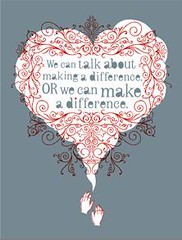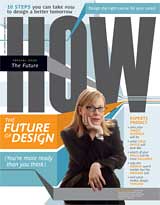Saved!
| FROM THE NEW YORK TIMES: GREENBELT, Maryland (CNN) -- The shuttle Discovery will pay the Hubble Space Telescope a final servicing call in 2008, NASA Administrator Michael Griffin announced Tuesday. The new plan reverses a decision made by former NASA Administrator Sean O'Keefe in the wake of the Columbia disaster that such a mission would be too risky to attempt. "We are going to add a shuttle servicing mission to the Hubble Space Telescope to the shuttle's manifest, to be flown before it retires," Griffin told employees at the Goddard Space Flight Center in Greenbelt, where Hubble operations are based. He received a standing ovation. Discovery will be commanded by veteran astronaut Scott Altman. His crew will include pilot Greg Johnson, robotic arm operator Megan McAurthur, and space walkers John Grunsfeld, Mike Massimino, Andrew Fuestel and Michael Good. The final Hubble mission, scheduled for May 2008, will install two new instruments, the Cosmic Origins Spectrograph and the Wide Field Camera 3. The astronauts also will service Hubble's gyroscopes, which keep the telescope stable for high-precision pointing. Astronomical workhorse The first orbiting telescope ever deployed, Hubble was launched in 1990 with much fanfare. It was initially regarded as a scientific flop, however, when operators discovered that a flaw in the telescope's main mirror resulted in blurry images. NASA flew a shuttle mission in 2003 in which astronauts conducted a series of spacewalks to repair the optical unit. Since then, Hubble has proven itself a workhorse, churning out one stunning view of the universe after another. NASA conducted additional servicing and upgrade missions in 1997, 1999 and 2002. Hubble's future was cast into doubt, however, on February 1, 2003, when the shuttle Columbia incinerated over Texas on landing approach to the Kennedy Space Center. An exhaustive inquiry by the Columbia Accident Investigation Board eventually concluded that a 1.6-pound piece of insulating foam broke loose from Columbia's external tank during launch, cracking a hole in the heat shield covering the leading edge of the left wing. When Columbia re-entered the atmosphere to land, searing hot gases seeped into the breach. All seven astronauts aboard died as the spacecraft burst into flame and broke apart. As part of its final report, the investigation board issued a series of recommendations to NASA that the space agency would need to implement before shuttle flights could resume. Among them, the investigation board said that NASA should develop methods to inspect the shuttle in orbit for damage to the heat shield, and to repair damage should any be found. As it has played out, NASA has had good success conducting inspections, but repair capability has proven much harder. While engineers have developed some techniques to repair small scratches, NASA still has no way to repair sizable damage to the heat shield. NASA returned the shuttle fleet to service in July 2004, and has since flown only two more shuttle missions. All three of those shuttles docked with the international space station, as will all future shuttle missions except the Hubble servicing mission. 'Safe haven' That is significant because a key component of NASA's flight rationale has been that if inspections turned up significant damage to the heat shield, the astronauts could always take refuge, or "safe haven," aboard the space station and wait as long as three months for a rescue mission. In January 2004, O'Keefe canceled a scheduled Hubble servicing mission because the shuttle would not be going to the station, and a "safe haven" would not be an option. However, in the three post-Columbia shuttle flights, NASA engineers and managers have noted that modifications made to the external tank to prevent potentially damaging pieces of foam from flying off during launch have been largely successful. They say they are confident in their heat shield inspection methods, and in the ability to repair small areas of damage. In the end, the decision came down to a risk-versus-benefit analysis, with Griffin making the final call. "I would not sign up to something that could not succeed, and succeed safely," Griffin said Tuesday. "The safety of this crew on this mission will be as much as we can possibly do." The servicing mission will be designated STS-125. NASA could move that launch date up if Hubble were to experience mechanical difficulties in the interim. Should it be needed to fly a rescue mission, a back-up shuttle will be nearly fully prepped for flight prior to Discovery's launch, and sitting on the other launch pad at the Kennedy Space Center. Since Columbia, NASA has budgeted about three months as the time needed to mount a rescue mission, but for this mission the turnaround will have to be far tighter. Discovery's astronauts will carry with them enough food, provisions and supplies to stay in space 25 days if necessary. They also would need to take extra lithium hydroxide canisters, which hook up to the shuttle's air circulation system and filter out carbon dioxide from the air. | |


















